
REILLY GRADIENT
Do-it-all titanium gravel bike
ISLA’S BIKES
Catching up with the children’s bike pioneer













OCTOBER/NOVEMBER


















Do-it-all titanium gravel bike
ISLA’S BIKES
Catching up with the children’s bike pioneer













OCTOBER/NOVEMBER
















This is the bit where I’d normally comment on the issue’s contents. But I’d like to use it instead to say farewell to cycling pioneer you may not have heard of: Geoff Apps, whom I worked with years ago on New Cyclist magazine.
Geoff passed away this summer aged 75. He was a bike designer whose influence doesn’t do justice to his ideas. He was independently developing off-road bikes at the time of the Marin County clunkers, only his were for traversing muddy British countryside.
Some of his ideas were ahead of their time. His off-road bikes had 29er and 650B wheels, lower-pressure tyres, hubbased braking (drums rather than discs) and luggage capability decades before mainstream mountain and gravel bikes.
Some of his ideas still seem out there. A high bottom bracket. A rigid fork. An upright riding position with a shorter reach and a higher handlebar. Some of those features, however, are central to the designs of another maverick, Jeff Jones. I’d recently approached Geoff about running an article about the two of them, what they did differently and why.
Geoff’s bikes weren’t overlooked because they lacked potential but marketing. He was really building bikes for himself, ploughing his own furrow, whether or not the industry took notice.
Here’s to doing things differently and following your own ideas, wherever they take you. For Geoff, that would be over loose rocks, through deep mud, across a stream and into the wilds beyond. clelandcycles.wordpress.com
DAN JOYCE Editor




34 Charging around the world
The first circumnavigation of the globe by electric bike
40 Power points
Everything you need to know about living with an e-bike
51 Isla’s bikes
Isla Rowntree talks bikes, business and the future
54 Unsurfaced Ireland
Gravel riding around Northern Ireland and the Republic
20 Shop window
A cross-section of new products
22 Gear up
Components, accessories and books
64 Bike test: Reilly Gradient
Titanium, do-it-all drop-bar bike
66 Bike test: Boardman URB 8.6
A 3-speed city runabout on test
69 Group test: commuter jackets
Waterproof jackets for the ride to work REGULARS
04 Freewheeling
Bits and pieces from the bike world
07 This is Cycling UK
Building the case for active travel investment with new MPs; the forthcoming Marcher Castles Way; elections for Cycling UK’s board of trustees; and more







16 You are Cycling UK
Elliot’s Place, one of our Community Cycle Clubs
18 You are Cycling UK
Cycle instructor Professor Balance
31 Letters
Your feedback on Cycle and cycling
48 Weekender
The Dartmoor Devil autumn audax ride
58 Cyclopedia
Questions answered, topics explained
73 Travellers’ tales
Cycling UK members’ ride reports
Road, Guildford, GU2 9JX E: cycling@cyclinguk.org W: cyclinguk.org T: 01483 238300. Cycle promotes the work of Cycling UK Cycle’s circulation is approx. 51,000. Cycling UK is one of the UK’s largest cycling membership organisations, with approx. 70,500 members and affiliates. President: Jon Snow Chief executive: Sarah Mitchell. Cyclists’ Touring Club, a Company Limited by Guarantee, registered in England No 25185, registered as a charity in England and Wales Charity No 1147607 and in Scotland No SC042541. Registered office: Parklands, Railton Road, Guildford, GU2 9JX. CYCLE MAGAZINE: Editor: Dan Joyce E: editor@cyclinguk.org Designer: Christina Richmond Advertising: Jacob Tregear T: 0203 859 7100 E: jacob.tregear@jamespembrokemedia.co.uk Publisher: James Houston. Cycle is published six times per year on behalf of Cycling UK by James Pembroke Media, 90 Walcot Street, Bath, BA1 5BG. T: 01225 337777. Cycle is copyright Cycling UK, James Pembroke Media, and individual contributors. Reproduction in whole or in part without permission from Cycling UK and James Pembroke Media is forbidden. Views expressed in the magazine are those of the individual contributors and do not necessarily reflect those of the editor or the policies of Cycling UK. Advertising bookings are subject to availability, the terms and conditions of James Pembroke Media, and final approval by Cycling UK. Printed by: Acorn Web Offset Ltd, Loscoe Close, Normanton Industrial Estate, Normanton, WF6 1TW T: 01924 220633













Veteran adventurer Nick Sanders has become the first person to cycle around the world on an e-bike. Here’s how his 19,000-mile journey unfolded
There are two basic mistakes you can make with any cycling adventure: not starting and not going all the way. Everything else – the planning, any trepidation, the reason for going – quickly falls into place.
Pedalling away from the familiar daily tumult, I left behind schedules, social clamour, my dear wife and the whole damn business of regular living. I escaped along bridleways that skirted fields, passing hidden castles in forests, riding on pencil-thin backroads and remote gravel tracks. I was two stone overweight, 66 years old and cycling around the world on an electric bike.
The beautiful thing about cycling is its simplicity and flexibility. Hardly any tools other than a spanner, innertubes and glue. Hardwearing tyres. A small camera. A map app on my mobile phone. And, on this journey, a spare battery for my e-bike.
In an attempt to get fitter, I’d ridden 7,000km from Nordkapp to Tarifa. But age makes you leaky and built-up stamina rapidly drains away. As a young man I would literally race across each continent. Now, heaving up the Bwlch y Groes in mountainous Welsh countryside, en route to Athens, my mind was focused on the simple details in front of me, such as the tiny colonising plants pimpling through stones and dirt. The destination seemed less important; the tableaux of nature more so.
The start of any journey matters in that small things set the tempo. I was alone with the sound from my tyres,




In 1981 Nick cycled around the world in a then record time of 138 days. In 1985 he did it again – in 79 days, averaging 171 miles a day. He holds the record for cycling around the coast of Britain in 22 days. Nick was the first person to cycle to the source of the Nile and the length of South America, and he’s cycled across the Sahara and through Asia.
my own heartbeat, the sweat and ache of my body, patterns of breath, small noises from the landscape.
I rode onward across the polders of Holland, pushing through the flatlands and onto the Flanders Fields of Belgium. I cycled along canal towpaths and river banks; there were shiny fruits on trees and many flowers along the Rivers Main and Danube. I traversed old motoring passes through Switzerland, then climbed easily up the Grossglockner mountain road to emerge in a Tyrolean landscape plucked from a fairytale.
Cycling in the sunshine feeling free, the world was rich with possibility. I was riding all day, stamping on the pedals to ride a distance that could be covered in an hour or two by car. But it was equally important to phone home regularly and send notices from the deep interior of the journey. I wanted to return home as easily as I’d left. “I was surprised, as always,” wrote Jack Kerouac in his seminal beat book On the Road, “by how easy the act of leaving was, and how good it felt.”
I didn’t have much of a plan but an imperative in everyone’s life begins when the dead people you know outnumber the living. That is when I had decided to go.



I rode down the Alps and onto the plains of Lombardy in the dead of night, contrasting the serenity of a castle I’d seen in the dark with the thrusting din of the highway – a highway I was soon able to escape. Old railway routes have been converted to cycleways such as the Via Verde della Costa dei Trabocchi down Italy’s Adriatic Coast, where every few
RIDING AN E-BIKE IS LIKE RIDING A NORMAL BIKE ONLY EASIER, BUT LIVING WITH ONE IS A LITTLE DIFFERENT. RICHARD PEACE EXPLAINS EVERYTHING YOU NEED TO KNOW
-bikes have the power to get more people cycling and to keep them riding when they otherwise couldn’t or wouldn’t. So the surge in e-bike sales and usage is good news. What’s missing is a broader awareness of e-bike safety and legislation, as evidenced by the battery fires reported in the news and those delivery e-bikers buzzing along at motorcycle speeds. To help address these problems, Cycling UK has partnered with a range of organisations to promote safe, legal and responsible e-bike usage.
Duncan Dollimore, head of campaigns at Cycling UK, said: “Like traditional pedal cycles, e-cycles are a great way to stay fit, save money on transport, and decrease carbon emissions and air pollution. E-cargo bikes are also perfect for individuals or businesses who need more


Richard is coauthor of the book Electric Bicycles and regularly reviews e-bikes for various cycling media
space to carry goods or people. However, many people in the UK have missed out on these benefits due to barriers such as cost or a lack of secure storage, and now concerns about battery fires have been added to the mix.
“We know that when purchased from a reputable manufacturer and used with the right batteries and chargers, e-cycles are very safe. To provide that assurance, along with advice on how to identify a safe e-bike, we’ve partnered with Bosch, the Bicycle Association, SHIFT Active Media, and the Association of Cycle Traders to launch the E-bike Positive campaign.”
You can read more about the campaign on page 43. If you’ve already bought an e-bike, or are considering doing so, what follows is a user’s guide.
Charging e-bike batteries safely – or rather, the failure to do so – is something that’s been in the news lately due to a number of e-bike fires. Occasionally these fires happen ‘spontaneously’. Most happen during charging.
While the headlines are alarming, statistically these fires are very rare. Some estimates say there are more than two million e-bikes in the UK. Battery fires occur at the rate of less than one a day, meaning the chances of it happening to you are statistically insignificant. Of course, you’ll still want to charge as safely as possible. If you follow a few basic battery care rules, you can rest easy that this should not happen to you.
The key thing is to get a good-quality battery manufactured to a high standard in the first place. There are a number of longstanding, successful and wellrecognised e-bike brands you can have confidence in. Conversely, avoid those brands whose agenda is to sell solely online at the lowest possible price.
If your battery pack is certified to UL 2271 this is good news: it means it has undergone rigorous safety checks. If the e-bike itself is certified to UL 2849, that’s even better. The whole bike will have been tested for electrical and fire safety, mechanical stability and the performance of e-bike components. Bosch is one of the few manufacturers certified to UL 2849.
How you charge your e-bike’s battery also has an impact.
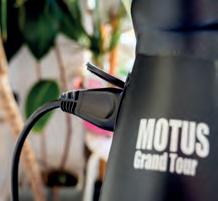
Above and right: Indoor charging helps avoid temperature extremes, which can damage batteries
Below: Always use the correct charger and the right battery for your e-bike
Bottom: Once charged, unplug the charger. Don’t leave it and go to bed




• Avoid temperature extremes
Batteries are least stressed at room temperature. Don’t charge and store batteries in very cold conditions (sub zero) or very hot places (especially in strong summer sun and behind glass). If you ride regularly in very cold weather, it could be worth getting a battery cover. Fahrer (fahrer-berlin.de/en/products/ e-bike) makes a variety of covers from neoprene and cordura.
• Charge correctly
This shouldn’t be a problem with a smart charger but avoid over-charging. Don’t leave the charger plugged into the battery for too long once it is full. Always use the correct charger for your battery and never use one that wasn’t specifically made for it.
While the headlines are alarming, statistically battery fires are very rare… If you follow a few basic battery care rules, you can rest easy
• Avoid shocks and store correctly
Too much vibration and jolting to a battery through rough handling or careless treatment can lead to a shortened life at best and to damaged cells at worst. Try to avoid long periods of storage as this may lead to batteries self-discharging beyond the point of no return. If you do need to store one for a period of months, check what the manufacturer’s recommended discharge state is for storage.
At some point your e-bike’s battery will need to be replaced, and a good-quality, reasonably sized replacement will cost several hundred pounds. However, the original battery should last three to five years – potentially more if it’s a good one that’s well looked after.











Victoria is a journalist who has previously worked for Cycling UK
Islabikes has stopped making bikes but that isn’t the end of the company’s story – or that of its founder, Isla Rowntree. Victoria Hazael spoke to her
As a customer of Islabikes, I received an email in October 2023 letting me know they were ceasing the sale and production of bikes. I was gutted: these were our bikes of choice, our go-to brand. I have interviewed Isla Rowntree before for Cycle, so I picked up the phone to find out what was happening – and where I could get spares.
First some history. Islabikes began as a small start-up in a barn in 2005. Before then, children’s bikes were heavy bicycle-shaped objects, built to a price point using parts designed for adults. Islabikes became the brand that cyclists bought for their children and grandchildren.
This popularity forced the wider industry to raise its game. The design of children’s bikes in 2024 owes a great deal to Isla’s attention to detail and commitment to incremental design improvements.
From the barn in Staffordshire in 2005, Islabikes transformed into a thriving 10,000-square-foot business based in Ludlow in Shropshire. Then the pandemic hit. During this time, Isla briefly took back over the running of the business.
“I hadn’t been the managing director of the business for some years,” she said. “I’d got to the stage where actually running an operation of that size and being responsible for it was something I didn’t want to be doing, so a couple of other people had been the managing director, and that led to a management buyout at the end of 2020.”
This unfortunately coincided with a turbulent period in the bike industry. At the time of the management buyout, when the majority shareholder would no longer be Isla (she would still retain a minority stake and position on the board), there was a huge boom in bike sales. But the new setup was soon tested.
“It was the bike industry’s toilet-roll moment,” Isla said. “We sold out, the supply chain across the world couldn’t support the demand, but that prompted over ordering. That led to long lead times of two or three years, because there is a finite production capacity. Across the industry, I suppose those orders were placed because people hoped that the spike in demand would be sustained and that this was our new normal.”
Reflecting on this time, Isla who is clearly saddened by the situation not just at Islabikes but across the industry, said that in hindsight: “Everyone in the industry should have been dialling down our forecasts, not putting them up. The problems for the industry are probably going to take another couple of years to get through fully… We as individuals made those decisions in good faith at the time, but yes I think we are victims of our own actions.”


With a week to spare, Joshua Gill planned a 350-mile circuit of the gravel tracks and smaller roads of Northern Ireland and the Republic

JOSHUA GILL
Josh is Cycling UK’s media manager and a keen bikepacker
Of the four home nations, Northern Ireland was the only one I hadn’t yet explored by bike. Expectations for my weeklong trip were high. I’d been told that the island of Ireland – I’d also be visiting the Republic – had a lot to offer. What surprised me was just how much.
The ancient and more recent history of the country lay at the edge of each road, trail and town. Signposts to stone circles, old pilgrimage routes and megalithic tombs were interspersed with memorials, monuments and plaques from the more recent history of the Troubles in Northern Ireland. Landscapes ranged from dramatic mountains draped in clouds to forests and farmland that filtered those that lived in the countryside towards cities like Belfast and DerryLondonderry.


Beginning the journey in Southampton, I packed my gravel bike in a cardboard box from the local Halfords and got a lift to the airport. Arriving in Belfast that evening, I opted to stay the night in the city, which gave me enough
time to set the bike up properly. The bike box had arrived a little battered but all seemed well. That was until I began cycling the next day…
BIKING AROUND BELFAST
Only an hour and eight miles into the ride, my gear cable snapped. Fortunately, I had spent that first hour cycling to different spots across Belfast, visiting places that paid tribute to pivotal points during the Troubles. Stuck in 12th gear, I pedalled into the city centre to hunt for a bike shop.



Bicycle Coffee Shop was one of the most helpful I’ve ever visited. Despite not being open, they were kind enough to let me in early and sort me out. While they worked on the bike, they shared suggestions and detours to fine tune my route. Their kindness and expertise were unmatched. Before I left they even offered to help box up my bike and drive me to the airport for free when I returned in seven days. I couldn’t have wished for a better start to my trip, and thanked them profusely for their help.
Besides the initial bad luck, the first day was blessed with sunshine, rolling hills



and stunning scenery. Light bounced off emerald grass swaying gently in a light breeze, and I was reminded, as I often am, of the wonderful serendipity of cycling.
Travelling by bike is one of the greatest ways to see the spaces between destinations, which is why I’ve taken to bringing a sketchbook with me to remind myself to stop and appreciate those rarely seen places.
My route took me north out of Belfast and towards the edge of Glenariff Forest Park. By day two I had hit one of the most northerly parts of Ireland, passing the Dark Hedges avenue of beech trees made famous by the Game of Thrones TV series, before following the coast west towards the Giant’s Causeway.
Each day took me deeper into the wild. Hills turned to mountains and the weather progressively worsened. I only enjoyed dry days at the beginning and end, and in between faced some of the most challenging downpours and headwinds I’ve ever encountered on a bike.
On the third day I navigated along the northern coast, following it all the way to Magilligan Point. Cycling UK’s Northern Ireland lead, Andrew McClean, had recommended this route so I could catch the ferry over to the Republic, which would avoid having to cycle south for another 20 miles to enter Derry-Londonderry. The recommendation turned out to reveal a hidden gem.
Just before reaching Magilligan, I followed the cycle trail from Portstewart to a National Trust forest where I found Mussenden Temple. After a little bit of exploring, I climbed Dungannon Hill where I followed the ridgeway to Gortmore viewpoint. With a clear horizon there were panoramic views, letting me see all the way to the heart of Donegal, to the islands of Islay and Jura off the west coast of Scotland and over to the campsite where I was planning to stay that night,



prior to catching the ferry. Standing beside me as I gazed around was a statue of Manannán mac Lir, a figure from Irish mythology associated with the sea. The statue’s hands were parted wide, as if it were taking in the view.
On day four I took the mountain pass bridleway through Glenveagh National Park towards Lough Veagh. Clouds formed around me as I cycled through misty rain between the mountains of Bingorms and Moylenanav, bringing me to the edge of the pass. The clouds parted as I turned the corner, and for the next 20 minutes I descended on a gravel track beneath partially blue skies while the sun helped to dry out my kit. I couldn’t believe my luck.
Camping each night took me to some incredible places in the heart of Ireland’s wilderness but,
Fact file Unsurfaced Ireland
Distance: 366 miles (589km) over seven days.
Route: From the heart of Belfast, crisscrossing between Northern Ireland and the Republic to explore its wild and rugged terrain. Rolling hills, historic landmarks and some really fun off-road segments.
Conditions: Two days of sun, rain the rest of the time (May 2024).
Bike used: Focus Atlas 6.8 gravel bike.
Maps/guides: Komoot and a Garmin Edge 530.
I’m glad I had… My rain jacket! And my sketchbook.
Next time I would… Pack a little lighter, swapping the winter sleeping bag for my summer one.
My route is here: bit. ly/komoot-belfast-jgill
While cycle touring presents challenges for the management of Type 1 diabetes (T1D), it is no longer the blocker it once was. After 25 years with T1D and numerous weekend tours under my belt, I had always put off doing a longer tour due to concerns regarding my diabetes. But I recently cycled across Europe. What follows are my tips for T1D management and cycle touring.
Historically, T1D was managed using frequent blood tests and insulin injections via syringes. For cycle tourers, this resulted in frequent stops and having to carry copious amounts of medical equipment. Thankfully, recent changes to the availability and funding for technology to manage diabetes has now made cycle touring with T1D easier than ever.
Continuous glucose monitoring (CGM) systems are devices that monitor blood glucose in real time. Now freely available on the NHS to everyone with T1D in the UK, these have made an immeasurable difference to the health and quality of life of T1 diabetics. With a little bit of tinkering with open-source software, most active diabetics now display their blood glucose on their smartwatches. Being able to check your blood glucose as easily as you can check your heart rate, without the need to stop and test, combined with more compact equipment, really opens up the possibilities to go further afield.
For those longer trips, there is still the logistical


challenge of carrying the necessary medical equipment. An overly minimalist approach to packing can leave you in a tight spot, with not enough food or medication. The only real solutions are to coordinate deliveries along your route or to take larger panniers.
Despite the advances in technology, there is a lot to manage: balancing exercise intensity with insulin sensitivity; carbohydrate intake with energy expenditures; and having one pannier full of camping equipment and the other full of diabetes medication. Having people around you who understand the condition is invaluable.
Everyone has their own hurdles getting in the way of the epic cycle trip they’ve always dreamed of; T1D is just another challenge. With some careful planning, supportive friends and a little bit of confidence, there’s a route around it.
I’m not a medical professional so do consult your GP before undertaking your own longdistance trip with T1D. You can find more information at nhs.uk/conditions/type-1diabetes and bit.ly/jdrfuk-exercise-advice


RHYS EVANS
Rhys has been cycle touring with Type 1 diabetes for many years
Diabetes explained
● T1D is an autoimmune condition that affects about 350,000 people in the UK. It arises when the pancreas no longer produces insulin, the hormone that regulates blood glucose by pushing glucose from the bloodstream into the body’s cells where it’s used to make energy. Without insulin production, Type 1 diabetics need to constantly manage this through the regular monitoring of blood glucose levels, the injection of insulin, exercise and consumption of carbohydrates.
● If your blood glucose is too high it leads to longterm nerve and tissue damage. Too low and it results in short-term issues for brain function, which can result in seizures. Avoiding these two issues is a constant balancing act that is complicated by your body’s sensitivity to insulin being affected by many factors, such as temperature, exertion, and hormones. Unlike Type 2 diabetes, T1D is not linked to lifestyle factors. It is typically diagnosed in childhood.
Use downloadable add-ins to display blood glucose on your smartwatch or bike computer. (It's possible with all major brands)
Consider using an insulin pump. It enables easy modifications to insulin dosing, based on activity levels and insulin sensitivity
On longer tours when it’s not possible to carry enough medication, ask Warmshowers hosts en route if you can arrange deliveries to them
After prolonged higher activity levels, your basal insulin requirements are lower. Incrementally lower your basal insulin using an insulin pump
Lightweight cooling products exist for keeping medication at the correct temperature – something to consider on long tours in warm climates


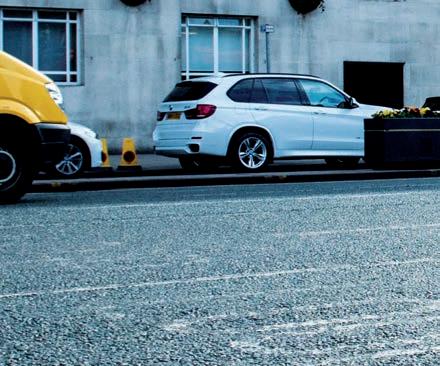




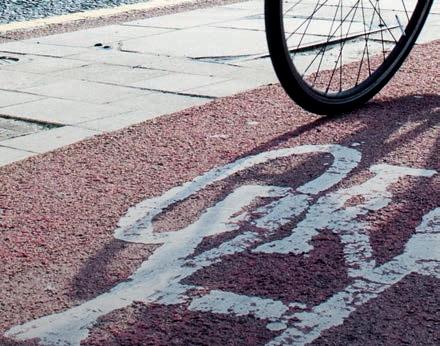






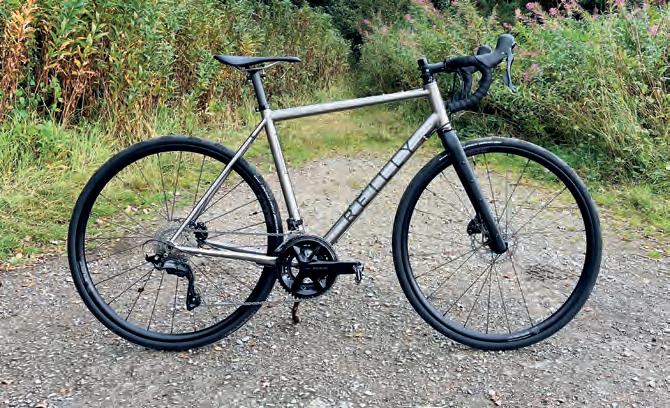

Carbon fibre dominates the higher-end bicycle market but there’s still a place for titanium. Dan Joyce tests a £4,000 gravel bike from Reilly
If you’ve been to the Bespoked show lately you’ll have seen the shiny titanium road and gravel bikes of Reilly Cycleworks. Co-founder Mark Reilly was a framebuilder (he passed away in 2021) but the company's frames are made in Taiwan and China to his designs rather than TIG welded here in the UK.
They're not custom built as such; they come in off-the-peg sizes. But you can customise your bike with a range of à la carte component options and upgrades. I chose a narrower bar, shorter stem and shorter cranks, and road rather than gravel tyres. The Gradient is pitched as a do-it-all bike for road, audax, touring and commuting as well as gravel and cyclocross. For most of those categories, road tyres are better.
Like other Ti bikes, the Gradient’s frame tubes are titanium alloyed with aluminium (3%) and vanadium (2.5%) – hence 3AL 2.5V. Broadly speaking this is half the weight of chromemoly steel, just as strong and similarly resilient (springy), which accounts for its reputation for comfort and its sometime nickname: ‘old man’s carbon fibre’. It’s not as fatigue resistant as steel, however, something any owner who has found a crack in their ‘bike for life’ can attest to.
So it’s reassuring that the Gradient, like other Reilly frames, comes with a lifetime warranty for the original owner. That in itself is a vote of confidence in its durability. Moreover, it is a well-made frame, with sufficiently chunky,
hydroformed tubes neatly welded together. Stronger 6AL-4V titanium is used for bits like the cowled dropouts.
The bottom bracket is threaded rather than press-fit, and the straight 44mm head tube looks better than a truncated cone while still accommodating a tapered fork steerer. Although the rear brake hose runs through the down tube, the gear cables are external. That's an unusual mix but in maintenance terms it makes sense: you seldom mess with hydraulic hoses. There are plenty of frame fittings, including for a rear rack.
The geometry numbers are more endurance road bike than extreme off-road adventure bike. It still has a taller head tube, bigger tyre clearances and longer front centres than your typical road bike – although bear in mind that this is a Large; Medium is recommended for my 177cm height. I’d fit that too but it has a 20mm shorter head tube and 11mm less toe room.
The fork is full carbon and has mounts for luggage/bottle cages and a mudguard, as well as internal routing for a dynamo cable.
The Gradient takes tyres up to around 43mm wide – or 47mm if you downsize to 650B (ISO 584) wheels. By default they’ll be Panaracer GravelKing SK. I asked for fast-rolling road tyres instead. The 32mm Continental GP5000S TR tyres supplied are great. If I were buying a Gradient, however, I’d likely choose the AS version, which is tougher and comes in a 35mm width.

Dan’s own best bike is a custombuilt titanium hardtail (which cracked and was repaired)
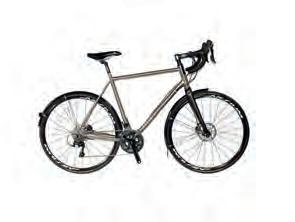
SPA CYCLES ELAN TI MK1 105 11-SPEED HYDRAULIC £2,340
The Mk1 version of Spa’s keenly priced all-rounder has postmount brakes and is slightly cheaper than the flat-mount Mk2. Not the lightest but a tall head tube and slacker seat angle boost comfort. spacycles.co.uk

KINESIS TRIPSTER ATR FRAMESET £2,400
The latest version of Kinesis’s ‘adventure, tour, race’ bike that we reviewed in April/May 2015 now has longer front centres, more tyre room (up to 45-622 or 50-584) and tweaks to the tubing. kinesisbikes.co.uk









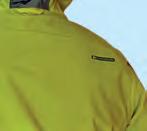


A practical waterproof jacket is one of the most important items in any transport cyclist’s wardrobe.
Hannah Collingridge reviews four

HANNAH COLLINGRIDGE
Hannah is a bikepacker who wrote the Pennine Bridleway guidebook but she’s also a utility cyclist
Commuting, whatever the season, is always best in dry weather. But as that’s not always possible, here are four jackets designed to make a wet commute more pleasant while also keeping you visible to traffic. These aren’t super-lightweight racing ‘capes’ but something a little more substantial for daily wear and slower speeds. They’d also be suitable for touring.
All of the tested jackets are waterproof and breathable to an extent. Ideally rain can’t get in while sweat can get out. However, with all jackets it’s possible to sweat faster than a fabric can cope with, especially on warmer days, when you’re pedalling hard or if you just happen to sweat a lot.
Caring for these jackets is straightforward; they’re all machine washable at 30 degrees. Apart from keeping them fresh, washing will help them breathe better as dirt and grime can block pores in the fabric. Don’t use fabric conditioner, however, as it messes with a jacket’s proofing and breathability.
Most jackets have a durable water-repellent (DWR) coating to help rain run off. This gradually wears away but you can reproof a jacket by washing it with Nikwax TX Direct Wash-In Waterproofer or similar.
Cycle’s test promise
At Cycle, we are proudly independent. There’s no pressure to please advertisers as we’re funded by your membership. Our product reviews aren’t press releases; they’re written by experienced cyclists after thorough testing.


The figure in thousands of millimetres isn’t an amount of rainfall but the hydrostatic head – the water pressure it will withstand. The bigger the number, the more waterproof the fabric. At 5,000mm, the fabric should withstand persistent light rain. From 10,000mm and above, it should cope with heavy rain.
Breathability is rated on the same kind of number scale (5,000, 10,000 and so on) as waterproofness. Here it refers to the grammes of water vapour that can pass through the fabric in 24 hours. A bigger number is better for breathability. Vents make a big difference, too.
Bright colours help in daylight but in the dark you need plenty of reflectivity to

make you stand out in a car’s headlights. It is possible these days to get a jacket that’s not hi-viz yellow yet still reflective, if you want something more sober.
4 Fit Fit is crucial but can’t really be determined without you trying a garment on. Your reviewer is a slightly chunky, 5ft 6in middle-aged woman who usually fits a 16, so that is what size the test jackets came in. There are men’s versions of all four jackets.
A hood helps keep rain out but it needs to fit either over or under a helmet, if worn, and ideally be adjustable so that peripheral vision is not lost. Pockets are always handy if they are in the right place. I’ve used the modern standard for pocket size: will my phone fit in?



The sound of an e-bike motor brought the hills alive for Ann Shrimpton, who spent six days in Austria
When you think of Austrian mountains, you probably think of skiing or Maria von Trapp. But in the summer Saalbach-Hinterglemm becomes the largest biking region in Austria. Words can’t properly describe how beautiful it is here, surrounded by a 360-degree view of mountain landscapes, with snowy Alps in the distance. There is something for all cyclists, from the serious mountain bikers who go to the top of the mountain and ride down fast, to the gravel cyclists like us who just love exploring.
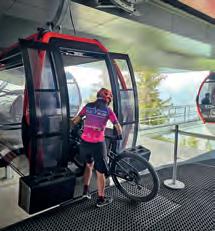
There are more than 400km of cycling trails in this region. You can get to the top of them using chairlifts and cable cars. You take your bike in the gondola up the mountain, which allows you freedom to explore further. There are extraordinary views from the top, stunning mountain trails and amazing descents. We rented a self-catering apartment in the small village of Hinterglemm, with a balcony overlooking the mountains. It was amazing to have our breakfast and our evening après-ride glass of wine enjoying the view and breathing in the crisp mountain air.
Due to the mountainous terrain, we rented e-bikes on this trip. They opened up

the entire region to us. Rides and climbs that would normally be out of reach for us were completely attainable. We cycled to the summit of three different mountains higher in elevation than Ben Nevis!
By using the maps of the region and finding trails on Komoot, we managed to pull together a fabulous six days of riding. These included cycling through the idyllic Glemm Valley, as well as climbing to the top of those mountain peaks.
The trails, the views, the mountains, the gondolas, the strudel, the warm hospitality of the Austrians, the mountain air and the constant desire to burst into a Julie Andrews-style rendition of ‘The hills are alive’ would bring me back again and again to this region.
To read more or view the routes, see my blog veloann.com/post/the-hills-are-alive


Pete Younger and partner Saartje rode across Europe on bikes worth £80 the pair
“I HAVE COME across Europe from Scotland to the Black Sea. Please take me and use me well.” We Google translated that message into Romanian and wrote it on notes tied to our bikes.
It was the evening of 17 May 2024. My partner, Saartje, and I had just completed our project to cycle across Europe from the North Sea to the Black Sea, following the Rhine and Danube. Our route had taken us 4,000km in 53 days of cycling through 11 countries.
In planning the project we knew that work commitments wouldn’t allow more than two or three weeks’ cycling per holiday, so it would require several instalments. But it would be too expensive and inconvenient to fly our ‘good’ touring bikes out and back for each trip. So we decided to use cheap bikes we could leave with friends across Europe between trips, and which need never make the journey home.
We bought both bikes locally – my Viking Alghero town bike for £50 and Saartje’s Merida Dakar MTB for £30. After a little sprucing up, they set off with us to the Netherlands by ferry from Newcastle. Both bikes did us proud.
That final evening in Constanta we left our newly labelled bikes outside the main station. Next morning we returned to catch a train for Bucharest and our flight home. Both bikes were gone.
I hope their new owners get as much pleasure from them as we did.
More online
Fancy contributing to Cycle?
Read the guidelines here: cyclinguk.org/be-part-cyclemagazine
